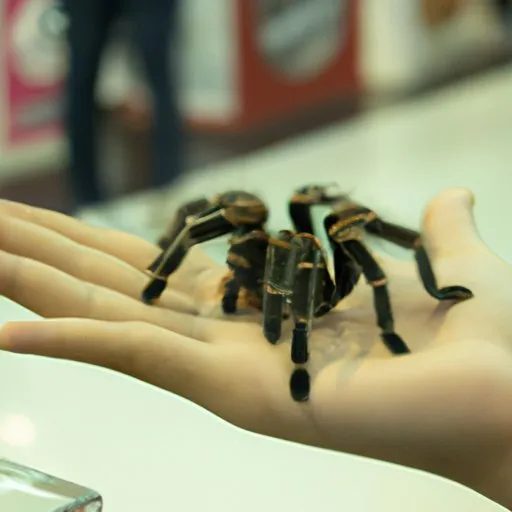Understanding Tarantula Care Costs
Owning a tarantula can be a fascinating and rewarding experience, but it’s essential to understand the financial commitment involved before bringing one home. Tarantula care costs vary depending on several factors, including the species, size, and your chosen setup. This guide provides a detailed breakdown of the expenses you can expect, from initial setup to ongoing maintenance, helping you make an informed decision about whether tarantula ownership aligns with your budget. The appeal of these creatures, from their diverse sizes and colors to their relatively low-maintenance nature compared to other pets, often draws enthusiasts, but proper planning is key to ensuring both your tarantula’s well-being and your financial peace of mind. Remember that these costs can vary, and it is very important to research specific species needs.
Initial Setup Expenses
The initial setup for a tarantula involves a one-time investment that can vary significantly depending on the size of your tarantula and the type of enclosure you choose. While some costs are unavoidable, others offer opportunities for savings through careful planning and choices. It’s wise to consider these upfront costs thoroughly, as they set the stage for your tarantula’s comfortable and safe habitat. Quality often reflects in the long term, so investing a bit more initially in durable and appropriate housing can be beneficial, reducing the need for replacements down the line. Think of the initial setup as providing the foundation for your tarantula’s well-being, and therefore, it is very important not to cut corners on it.
The Cost of a Tarantula

The price of a tarantula can range dramatically, depending on the species, age, size, and availability. Common, readily available species such as the Chilean Rose Hair tarantula are generally the least expensive, often costing between $15 to $50. More exotic or rare species, such as the Cobalt Blue or the Gooty Sapphire Ornamental, can cost anywhere from $75 to several hundred dollars. Keep in mind that the price is not a reflection of their care requirements. Researching different species’ needs is important before acquiring any tarantula, as the more unique the species is, the harder is going to be to find the food, substrate, or the specific equipment they require.
Terrarium and Enclosure Costs
A suitable enclosure is crucial for your tarantula’s health and safety. The cost of a terrarium or enclosure can vary based on size, material (glass, acrylic, or plastic), and any additional features. For smaller tarantulas, a plastic container with a secure lid might suffice, costing around $10 to $20. For larger species, you’ll need a larger enclosure, potentially costing $30 to $100 or more. When choosing an enclosure, consider ventilation, ease of access for feeding and cleaning, and secure closures to prevent escapes. Always make sure there are ventilation holes on the sides of the enclosure, as ventilation from the top may lead to humidity problems. The enclosure should be big enough for the tarantula to move and also provide enough space for substrate and decorations.
Substrate and Decor Costs
Substrate is the material that lines the bottom of the enclosure and provides a suitable environment for your tarantula. Common substrates include coconut fiber, peat moss, vermiculite, and even a mix of these. The cost of substrate can range from $10 to $30, depending on the type and amount needed. Decor, such as hides (cork bark, half logs), plants (real or artificial), and water dishes, also contribute to the initial setup cost. Hides are important for providing security for your tarantula, which can affect its overall health and well-being. Artificial plants and water dishes usually cost from $5 to $20 each. The total cost for decor can range from $15 to $50 or more, depending on how elaborate you want the setup to be.
Ongoing Monthly Costs

After the initial setup, you’ll face ongoing monthly costs to maintain your tarantula’s habitat and keep it healthy. These costs are typically more predictable than the initial setup expenses. Some of the monthly costs are essential for your tarantula’s survival and well-being, while others are more about maintaining the conditions of their habitat. Careful budgeting and smart choices can help you manage these expenses effectively.
Food Costs
Tarantulas primarily eat insects, and the cost of food varies depending on the size of your tarantula and the type of insects you feed them. Crickets, mealworms, and dubia roaches are common choices. Crickets are usually a budget-friendly option, costing around $0.10 to $0.25 each, depending on the quantity purchased. Mealworms are also affordable, with a weekly supply costing roughly $5 to $10. Dubia roaches, though more nutritious, can be slightly more expensive. The frequency of feeding depends on the tarantula’s age and species. Juvenile tarantulas need more frequent feedings than adults. Plan for about $10 to $30 per month on food, depending on the size of the tarantula and your feeding schedule. Consider raising insects yourself if you want to lower costs.
Heating and Lighting Costs
Many tarantula species require a consistent temperature and humidity level. While some species can thrive at room temperature, others need supplemental heating. Heating can be provided using heat mats or ceramic heat emitters, which can range from $15 to $50. The electricity cost will vary based on your location and the size of the heater, but it’s usually minimal, about $5 to $15 per month. Lighting isn’t always necessary, but if you choose to use it, LED lights are energy-efficient and can add a nice touch to the enclosure. Consider timers for your heating and lighting to ensure your pet’s safety and to save on energy.
Water and Humidity Costs

Maintaining the right humidity level is crucial for tarantula health, especially for tropical species. You’ll need a water dish for your tarantula to drink from, which is a very minimal cost. You may also need to mist the enclosure regularly to maintain humidity. The cost of water is negligible. The main cost associated with maintaining humidity is the purchase of a hygrometer and a mister. The hygrometer monitors the humidity levels in the enclosure, and the mister allows you to maintain them accordingly.
Unexpected Costs and Considerations
Beyond the predictable costs, tarantula ownership can sometimes involve unexpected expenses. It’s important to be prepared for these potential costs to ensure you can provide the best care for your pet without financial stress. Anticipating possible issues is key to responsible pet ownership.
Veterinary Care
While tarantulas don’t usually require regular vet visits, it’s important to have a plan in case your tarantula becomes ill or injured. Exotic animal veterinarians, those who specialize in reptiles and invertebrates, can be expensive. A checkup might cost $50 to $100, and treatments can be significantly more. Research exotic vets in your area before getting a tarantula. If your tarantula has any issues, it is important to seek help quickly. If the vet has to prescribe any medication, it may cause a significant increase in costs.
Potential for Escapes and Replacements

Tarantulas are escape artists. If your tarantula escapes, the costs could involve replacing the tarantula. Additionally, there might be costs associated with repairing any damage caused by the escape. If the tarantula escapes, it might result in the tarantula not being found again, therefore requiring its replacement. Make sure the enclosure is always secure, and always keep in mind that it should be able to withstand the tarantula’s weight and size.
Long-Term Cost Analysis
Over the long term, the cost of owning a tarantula can be relatively low compared to other pets. Once you’ve covered the initial setup, your main expenses will be food, substrate, and occasional replacements. However, the longevity of tarantulas, with some species living for over 20 years, means that these costs add up over time. Long-term planning is very important, especially when considering that there is no guarantee that the tarantula will have a specific lifespan. The more you invest in the initial setup, the lesser the need to replace certain parts over the long term, therefore, keeping costs as low as possible.
Cost-Saving Tips for Tarantula Owners
There are several ways to reduce the cost of owning a tarantula without compromising its well-being. Careful planning and smart shopping can save money. Buying supplies in bulk, researching the best prices, and taking advantage of sales can make a big difference. Building a strong relationship with local pet stores may also grant you some discounts. By being resourceful, you can create a budget-friendly environment for your tarantula. Consider the following tips:
- Buy food insects in bulk to reduce per-unit costs.
- Make your own enclosure using repurposed materials (ensure they are safe and secure).
- Research the specific needs of your tarantula species to avoid unnecessary expenses.
- Monitor humidity and temperature with digital devices, saving money and ensuring accuracy.
- Join online tarantula communities for advice and potential deals on supplies.
Owning a tarantula is an enjoyable experience, but it’s important to understand the costs involved. By carefully considering the initial setup, ongoing maintenance, and potential unexpected expenses, you can make an informed decision. With proper planning and budgeting, you can provide a healthy and happy home for your tarantula without breaking the bank. Remember, the well-being of your pet should always be the priority.
